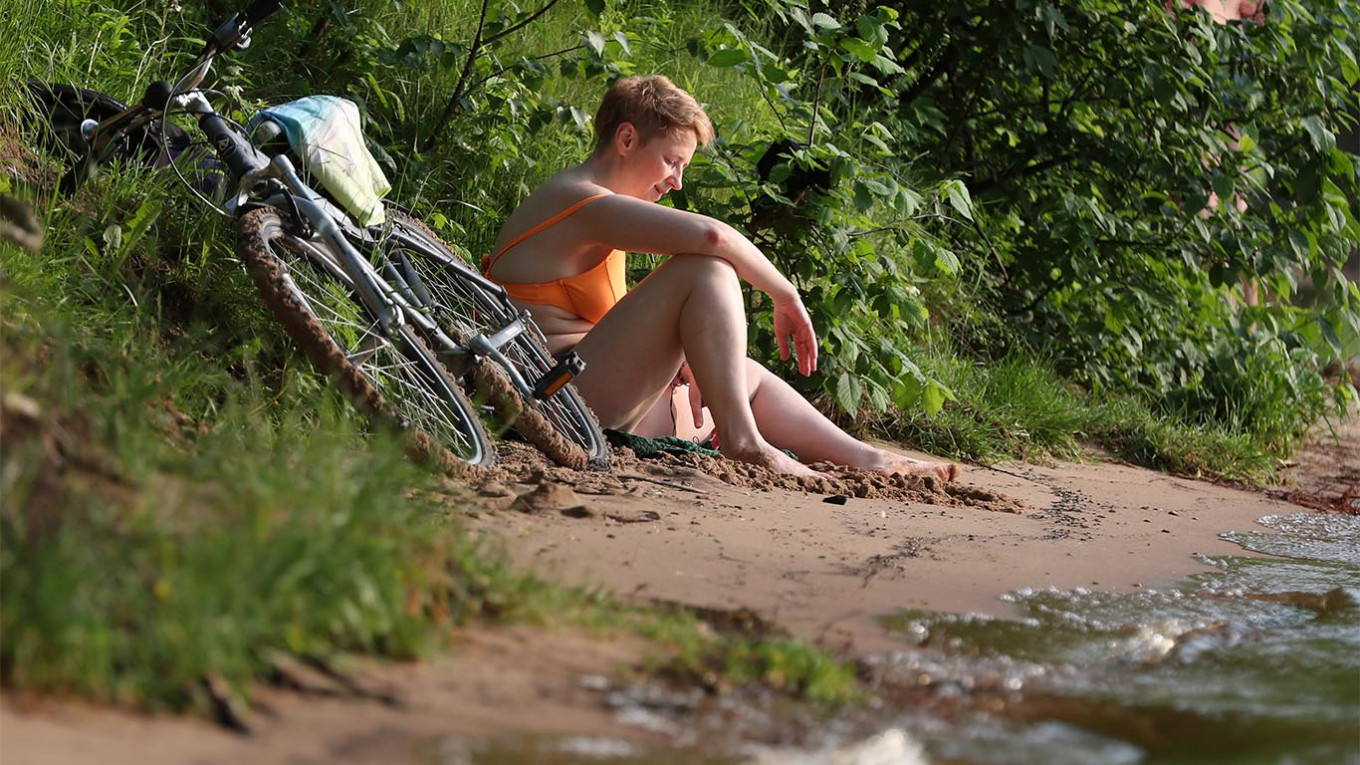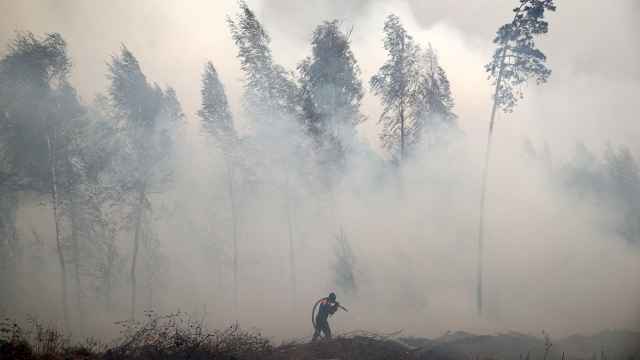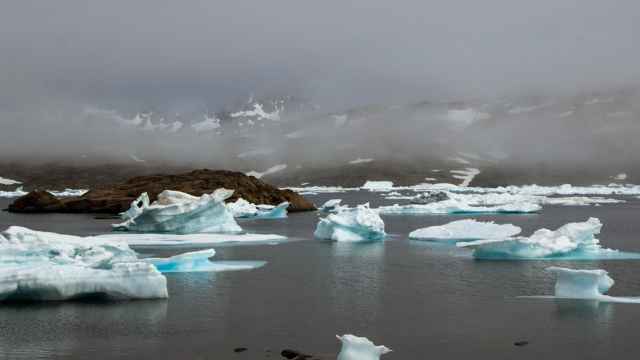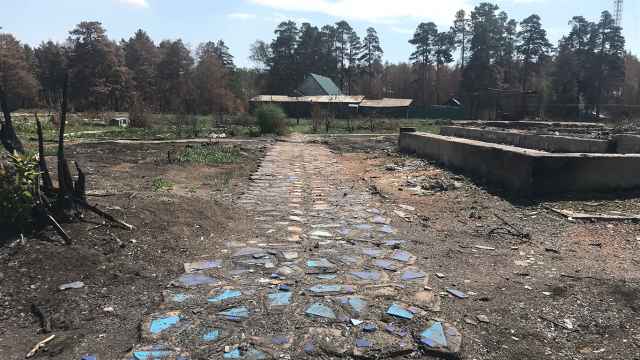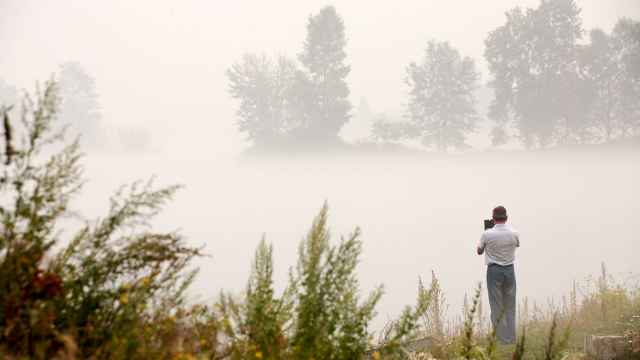Siberia’s unprecedented heat wave will continue through July, experts have warned, increasing the risk of forest fires and permafrost damage and highlighting the effects of climate change.
Forecasts show that five Siberian regions, including one in the Arctic, will experience temperatures of 37 degrees Celsius in early July. This follows The Siberian town of Verkhoyansk reporting possibly the hottest-ever temperature above the Arctic Circle of 38 C earlier in June and other parts of the Arctic seeing 30 C when the average for the time of year is zero.
“Heat waves in summer have always existed, but now, with climate change accelerating, they’re becoming longer and more frequent,” Alexey Kokorin, the head of the Climate and Energy program at WWF Russia told the Moscow Times in an interview.
The hot Siberian summer comes on the heels of the hottest winter since 1891, according to the Russian State Meteorological Service, with average temperatures in what used to be one of the coldest regions of the world hitting 6 C.
The warming isn’t just affecting Russia’s northern regions.
In the country as a whole, the rate of temperature growth is 2.5 times higher than the global average,” according to a 2019 climate change report from the Russian Hydro Meteorological Service, which also highlights a decrease in ice cover in the Arctic, snow cover all over the country and thawing of the permafrost that covers up to 60% of Russian territory.
By 2050, the damage to the Russian economy from thawing permafrost may slash 8.5% from GDP, Alexander Kislov a researcher with the Geographical Faculty of Moscow State University told the state-run RIA Novosti news agency earlier this year.
Diesel spill
Thawing permafrost has also been blamed for a massive diesel spill from a storage tank owned by a subsidiary of metals giant Norilsk Nickel in May. While the company has said melting permafrost weakened the tank’s supports, Greenpeace says Nornickel is trying to “avoid responsibility” by blaming climate change rather than its failure to modernize its infrastructure.
Following the diesel spill, which released over 20,000 metric tons of fuel into a Siberian river, Russian Deputy Prime Minister Victoria Abramchenko ordered the authorities to evaluate environmental risks for industrial facilities in the Arctic.
Nornickel has said it will carry out regular monitoring of the state of production facilities in connection with melting permafrost, and a number of other oil, gas and metals companies, including Gazprom, have also started paying more attention to the impact of climate change in Arctic and Siberian regions.
Stoking wildfires
The prolonged heat wave in Siberia is also stoking wildfires in the region. According to the Russian Forestry Service, as of July 2 wildfires covered an area of around 3 million hectares, most of them in Yakutia, Chukotka and Magadan regions. Environmental activists say that is 37% larger than a year ago.
Both the hot summer and very warm winter with little snow are contributing to increasing risks of forest fires. A number of regions, including Yakutia, have already introduced an emergency situation because of the wildfires.
The Russian State Hydrometeorological Service worst-case scenario forecast says that in southern Siberia the number of days in the year with high fire risk will increase to 50 over the next few years.
Siberian silkworms
The heat wave is also allowing insects that feed on trees to thrive, upsetting the natural balance. A study of around 150,000 hectares of forests found more than 50 Siberian silkworms per tree, up from the usual numbers of 30-40 per square meter.
Russia’s government in January published a plan of action outlining 29 broad measures to both mitigate damage and take advantage of opportunities created by climate change.
The plan acknowledges that warmer temperatures pose risks to public health, endanger permafrost areas and increase the likelihood of natural disasters.
The wide-ranging document includes “preventive” and “post-crisis” climate adaptation plans.
A Message from The Moscow Times:
Dear readers,
We are facing unprecedented challenges. Russia's Prosecutor General's Office has designated The Moscow Times as an "undesirable" organization, criminalizing our work and putting our staff at risk of prosecution. This follows our earlier unjust labeling as a "foreign agent."
These actions are direct attempts to silence independent journalism in Russia. The authorities claim our work "discredits the decisions of the Russian leadership." We see things differently: we strive to provide accurate, unbiased reporting on Russia.
We, the journalists of The Moscow Times, refuse to be silenced. But to continue our work, we need your help.
Your support, no matter how small, makes a world of difference. If you can, please support us monthly starting from just $2. It's quick to set up, and every contribution makes a significant impact.
By supporting The Moscow Times, you're defending open, independent journalism in the face of repression. Thank you for standing with us.
Remind me later.



